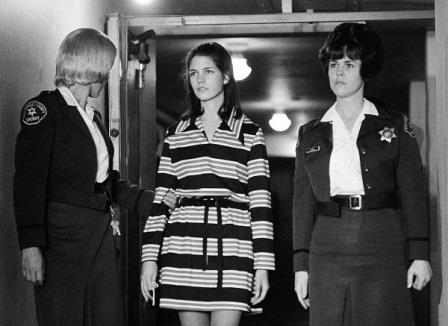How Leslie Van Houten Went from a Homecoming Queen to a Convicted Killer

Introduction
The story of Leslie Van Houten is a chilling testament to the complexities of human nature. Once a popular high school homecoming queen, Van Houten’s life took a dark and twisted turn, leading her down a path that eventually culminated in her conviction as a killer. This article explores the transformation of Leslie Van Houten from a young homecoming queen to a convicted murderer, delving into the factors that contributed to her involvement in one of the most infamous crimes in American history.
1. The Charmed Early Life
Born on August 23, 1949, in Altadena, California, Leslie Van Houten grew up in a seemingly ordinary middle-class family. She was bright, talented, and well-liked, excelling in academics and arts during her school years. Her early life, marked by academic achievements and popularity, provided no indication of the darkness that would eventually consume her.
2. The Influence of the 1960s Counterculture
The late 1960s were a tumultuous time in American history, characterized by social and political upheaval. Van Houten, like many young people of her generation, became enamored with the counterculture movement. She immersed herself in the world of drugs, free love, and anti-establishment ideals. This newfound lifestyle exposed her to a different reality, blurring the lines between rebellion and reckless abandon.
3. The Manson Family Connection
In 1968, Van Houten met Charles Manson, the charismatic yet manipulative leader of the Manson Family cult. Under Manson’s influence, Van Houten and other followers became ensnared in a web of delusion and violence. In August 1969, she played a direct role in the brutal murders of Leno and Rosemary LaBianca. The heinous nature of these crimes shocked the nation and solidified Van Houten’s place in criminal infamy.
4. The Trial and Conviction
During the Manson Family trials, Van Houten, along with several other followers, was charged with multiple counts of murder and conspiracy. In 1971, she was convicted of first-degree murder and sentenced to death. However, her sentence was later commuted to life imprisonment after the California Supreme Court invalidated the state’s death penalty statutes in 1972.
5. Rehabilitation and Controversy
Over the years, Van Houten’s case became a focal point of debate and controversy. Supporters argued for her rehabilitation, highlighting her remorse and the transformations she underwent while incarcerated. Despite several parole hearings and evidence of her rehabilitation efforts, her release has been consistently denied, with many arguing that her involvement in the gruesome murders outweighs any signs of remorse.
Conclusion
The story of Leslie Van Houten serves as a cautionary tale, illustrating the powerful influence of charismatic leaders and the dangers of succumbing to radical ideologies. Her transformation from a homecoming queen to a convicted killer is a tragic reminder of the complexities of human behavior and the potential for darkness within even the most seemingly ordinary individuals. Van Houten’s case continues to captivate the public’s fascination, prompting discussions about justice, rehabilitation, and the nature of evil. Ultimately, her story serves as a chilling reminder of the thin line between innocence and malevolence, urging society to remain vigilant against the allure of destructive ideologies and charismatic leaders.

